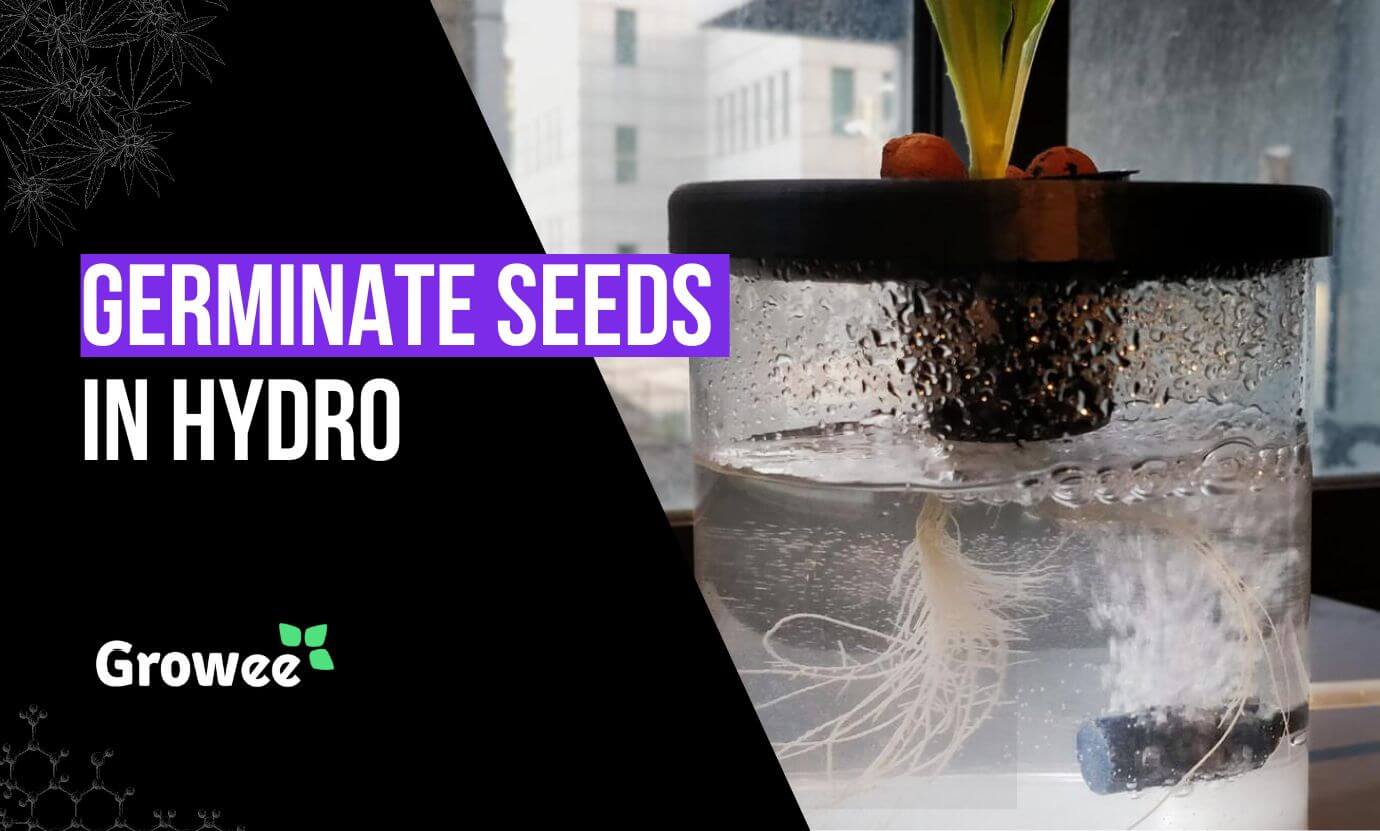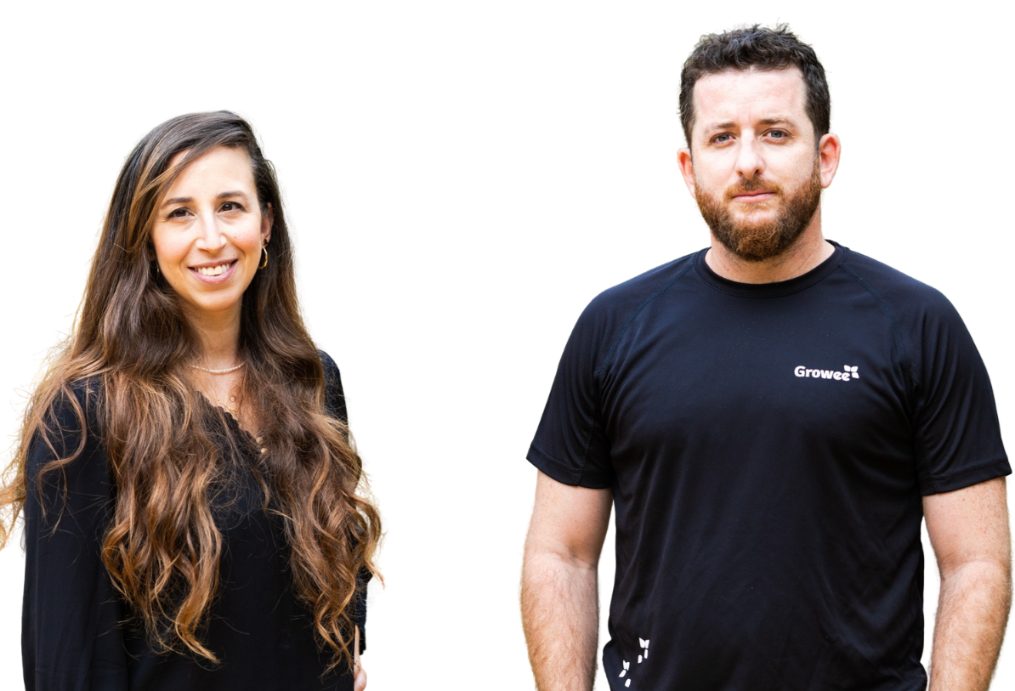In this article, we will dive into the art of hydroponic seed starting, explore top hydroponic seed starting methods, and provide you with comprehensive insights on this essential aspect of hydroponics. Let’s dive into the world of hydroponic seeding
What Is Hydroponics and Why Start Seeds with This System?
Hydroponics is the practice of growing plants without the use of soil. We are growing plants in an inert medium, such as clay pellets or Rockwool, with the roots of the plant hanging down into a reservoir where they get exposed to a nutrient-rich water solution, hence the term, hydroponics.
In simplest terms, plants are grown primarily with the use of a nutrient water solution, and yes, it’s quite different from growing crops regularly in soil. Then we have the seeds, which need to be germinated. Without germination, your seeds will never sprout into plants or grow at all.
Starting seeds hydroponically is a good idea for a variety of reasons, which we will cover below. It’s not like you’re just going to put the seeds right into the nutrient reservoir and call it a day. Rather, you’re going to germinate your seed in something like peat, perlite, Rockwool, clay pebbles, or even just a regular germination cube.
Once the seed has sprouted into a young seedling, you’ll then transfer it into the main hydroponics system. The point here is that you aren’t using soil. Hydroponically started seeds are beneficial because it’s easier and cleaner than using soil, it’s much easier to deal with and transplant the seedlings, and more, which you’ll discover further below.
See How Growee Can Save You Time By Automating Your Plants Feeding
Water pH – Automated pH Up and Down Control
Nutrients Mixing – Automated Nutrient Dosing with Target EC / PPM Control.
Control From Anywhere – WiFi Connection and mobile App
Different Types of Hydroponic Systems
There are quite a few different types of hydroponics systems out there that you can then transplant your germinated seeds into.
You won’t be starting your hydroponic seeds right in these systems, but once you’ve germinated your seeds using one of the methods that we will discuss below, the following hydroponic systems are viable for use.
Each one is a little different and has varying pros and cons, so let’s take a quick look at what they all are.
Deep Water Culture
Deep water culture or DWC for short, is one of the easiest hydroponic techniques out there, one that is perfect for hydroponics seeds. Here, the roots of the plant are suspended in a nutrient-rich solution that is oxygenated with air stones.
Plants are held in net pots and put in an inert medium, with the roots hanging down into the nutrient solution. It’s a great way to get started and doesn’t require much of a financial investment, although it’s not great for large plants.
Recirculating Deep Water Culture
This system is very similar to the one above, but with a recirculating deep water culture hydroponics system, the nutrient solution is constantly recycled and circulated throughout the system. It’s a great way to reduce costs and water consumption, although it also doesn’t work well for larger plants.
Nutrient Film Technique
NFT or the nutrient film technique is a special type of hydroponics system that uses a channel or shallow tray that is filled with a nutrient-rich solution. Just like with DWC, the plants are put in an inert medium and net pots, with the roots being allowed to hang down into the channel.
Interestingly, here the water and nutrient solution are also recirculated throughout the system. It’s a great way to save water and nutrients, but you also need a pump and timer to control the flow of water.
Ebb and Flow
Ebb and flow is a very neat type of hydroponic system, one that sees the plant’s roots hanging down into a reservoir. Unlike with other systems we’ve talked about so far, with ebb and flow, the reservoir is continuously flooded and emptied according to a specific timeline.
The nutrient solution floods the area and feeds the plants, and then drains away again. This is a great hydroponics system for large plants, plus it’s very customizable too, although you do need a timer and pump to produce the ebb and flow cycle.
Drip Irrigation
A drip irrigation hydroponics system sees the plants growing in any kind of inert medium, and the nutrient solution being dripped down into and throughout the medium using tubing.
This is one of the only hydroponics systems where the plants are fed from the top, as opposed to pulling up the nutrient solutions through the roots from the bottom up. This is a great system for growing many kinds of plants, plus it’s simple too, although it generally requires a good deal of maintenance.
The Wick System
The wick system sees the plants suspended in an inert medium, with a wick, generally made of cotton, that hangs down into a nutrient reservoir.
Just like a candle wick pulls candle wax up into it, so does the cotton wick pull up the nutrient solution to feed the plants with. This is a very simple and cost-effective hydroponics system, although it’s not great for larger plants.

What Are the Advantages of Starting Seeds Hydroponically?
If you’re wondering why you would start your seeds hydroponically, there are a few key reasons.
- If you start your seeds hydroponically, it ends up being much easier to transplant them into a larger hydroponic system once the plants need more room.
- When compared to starting seeds in soil, hydroponic seed starting is much cleaner and virtually mess-free.
- With hydroponic seeding, young sprouts also tend to grow much faster than when germinated and sprouted in soil.
- The other big advantage of hydroponics seed starting is that the chances of the plants developing diseases or being infested with pests is far lower, as soil may harbor various pests and pathogens.
How to Successfully Start Hydroponic Seeds?
When it comes to how to start seeds for hydroponics, this is quite easy. Generally speaking, when it comes to seeds for hydroponics, you’re really just going to follow a normal germination method, any method besides those that use soil.
It comes down to choosing the right inert medium to plant the seeds in, out of which they will then sprout. There are three main inert growing mediums used to sprout hydroponic seeds, these being rock wool, coconut coir, and peat and perlite. Let’s take a quick look at each.
Starting Hydroponics Seeds with Rockwool
Interestingly enough, rockwool is used in construction for insulation purposes, but it also happens to be great for hydroponics.
- Soak the rockwool cubes in water for about ten minutes, so they get soft and most.
- Put the seeds in the small holes that are present in the rockwool. You can always use a tool like a pencil or screwdriver to make the holes a bit bigger, if needed.
- Take a small piece of rockwool and cover the hole where you planted the seed. This is to block out light.
- Take the seeds and rockwool cubes and place them in a seed tray.
- Put water into the seed tray so that the cubes can absorb water, and cover with plastic wrap or a humidity dome. The seeds should germinate, and when they do, you can transfer them into your hydroponics system.
Starting Hydroponics Seeds with Coconut Coir
For those who don’t know, coconut coir is a type of material made out of coconut husks, and it’s something that works really well for hydroponics seeds.
- Place coconut coir pellets along with warm water in a seed tray.
- Allow the coconut coir pellets to soak up the water for about an hour until they are totally saturated.
- Plant your seeds in the coconut coir pellets and then pinch closed the hole to block out light.
- Use plastic wrap or a humidity dome to cover the seeds, and be sure to add some water every day.
- Once the seeds germinate and sprout, you can transfer them to your hydroponics system of choice.
Starting Hydroponics Seeds with Peat and Perlite
Mixing perlite with peat moss is another prime method for germinating seeds and growing plants hydroponically.
- Mix one part perlite with two parts peat.
- Add the mixture into a seed starting tray so that the individual cells are about three-quarters full.
- Add water into the seed tray until it starts to drain out of the bottom. Let the water disperse throughout the peat and perlite mix for about an hour, and then dump the rest of the water out.
- Put one seed in each cell, about half an inch under the surface, and gently cover with the mixture.
- Cover the seeds with a humidity dome or plastic wrap and wait until they germinate and sprout, at which point you can transfer them into your larger hydroponics system.
Why Are Seeds Better Than Seedlings?
Seedlings, also commonly referred to as “cuttings,” are young plants that have already started to grow from clippings or cuttings taken from mature plants.
Pros of Seedlings vs Seeds
- Seeds are usually cheaper to buy than seedlings
- With seeds, you get more access to a greater variety
- Seeds are generally not as likely to carry pests and diseases as seedlings
- Seeds stay good for a long period and don’t need to be planted right away
Pros of Seeds vs Seedlings
- Seedlings are much quicker to start, and also end up maturing faster too
- Seedlings often have a higher survival rate, especially if the roots are already well-established
- Seedlings are usually easier to deal with and require less knowledge
- Seedlings may be beneficial for those living in areas with shorter growing seasons
Requirements for Growing Hydroponic Crops
Let’s take a quick look at some of the main requirements for growing hydroponic crops.
pH and EC Levels
The pH level or acidity is important to maintain. Generally speaking, most hydroponic crops require a pH level ranging from 5.5 to 6.5, or slightly acidic.
As for EC or electrical conductivity levels (the amount of nutrients in the water), for most plants the desirable level is between 1.2 and 2, although it may range from 0.5 to 3 in some cases. Thankfully, balancing pH levels is made easy with something like the Growee App.
Temperature
Whether hydroponics or not, plants need a certain amount of warmth to grow. In most cases, hydroponic plants need the temperature to be at least 65 degrees but no higher than 80 degrees, although this depends on the plant in question. Using an innovative tool like the Growee Pro Combo, you can easily monitor water temperatures.
Light
Whether we are talking about HID, HPS, LED, fluorescent, or any other types of grow light, your plants need a lot of light to grow properly. They need good light to perform photosynthesis.
Oxygen Levels
Plant roots require oxygen to function properly, which means that hydroponics systems need to be aerated properly. This is generally done with air stones and air pumps.
Water
Of course, seeing as we are talking about hydroponics, you’ll also need plenty of water, along with the proper nutrients.
Selecting Seeds for Hydroponics:
When choosing seeds for your hydroponic system, it’s important to consider the specific crops you want to grow and their suitability for hydroponic cultivation. Some popular choices for hydroponic gardening include a wide range of plants, such as herbs, leafy greens, tomatoes, cucumbers, and more. Be sure to research the requirements and preferences of the plants you intend to grow in your hydroponic setup to ensure a successful and productive harvest.
Conclusion
Whatever hydroponic growth method you end up choosing, make sure that you set it up properly and germinate your seeds first. For hydroponics seeds, to start them, all you really need is an inert medium, a seed tray, and a bit of patience.
FAQ
Are all seeds suitable for hydroponic germination?
If proper techniques are followed, yes, virtually all seeds can be started hydroponically.
How long does it take for hydroponic seeds to germinate?
Germinating seeds hydroponically should take between 2 and 7 days.
What light spectrum is best for hydroponic seedlings?
The blue light spectrum is best for young plants, as this produces great vegetative growth.
How often should I check pH and EC levels during seed germination?
pH and EC levels should be checked every other day, if not every single day.
What temperature range is suitable for hydroponic seed germination
For most hydroponic seed germination, maintaining a temperature between 70°F to 80°F (21°C to 27°C) is recommended. However, specific temperature requirements may vary depending on the plant species.



